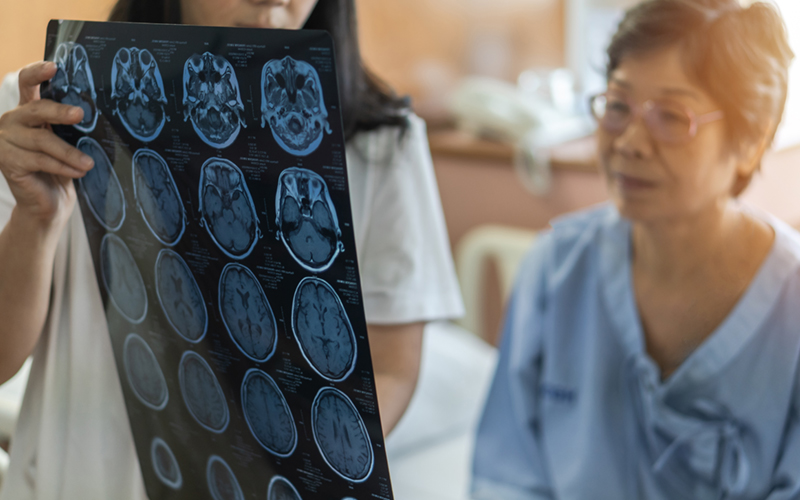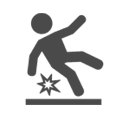Santa Clarita Brain Injury Attorneys
- 550+ Google 5-Star Reviews
- $1 Billion won over 15 years
- Won’t settle for low offers, not afraid to fight for max value

Get a Free Case Evaluation
No fees until we win!
All San Diego Case Types

Personal Injury

Brain Injury

Car Accident

Slip & Fall

Truck Accident

Wrongful Death
Santa Clarita Brain Injury Attorneys
Whether you live and work in Santa Clarita or you’re vacationing here enjoying attractions such as Magic Mountain and Hurricane Harbor, there is plenty to see and do. However, along with all of the adventures that the city provides, you can find yourself injured in Santa Clarita. Many accidents are preventable, and in many cases, the victim may pursue compensation from the party at-fault for the injury.
Among all of the injuries you can suffer in Santa Clarita, brain injuries are among some of the most serious and life-altering. Gomez Trial Attorneys has represented numerous victims of brain injury throughout California, and strives to serve as a resource for members of our Santa Clarita community. If you or your loved one has suffered a brain injury, an experienced Santa Clarita brain injury attorney can help you to understand the legal process of recovering damages.
About Santa Clarita Brain Injuries
An acquired brain injury is an injury that is not hereditary, degenerative, or congenital, and it does not occur during childbirth.
The two types of acquired brain injuries include:
- Traumatic brain injury, which is caused by a violent blow or jolt to the head or body. Traumatic brain injury is one of the leading causes of accidental deaths in the U.S., with more than 5 million people currently living with permanent disabilities as the result of a TBI. There are more than two million emergency room visits each year for TBIs, with more than 50,000 of these injuries resulting in death. While TBIs are categorized as mild, moderate, and severe, there is nothing “mild” about a brain injury. Even brain injuries that have been classified as mild are capable of producing debilitating, chronic headaches, memory loss, and other deficits. The most common causes of traumatic brain injuries include falls, motor vehicle accidents, assault or abuse, being struck by or against an object, sports and recreational activities, and military service in combat zones.
- Non-traumatic brain injuries are those that are caused by factors such as lack of oxygen, exposure to toxic substances, and health issues such as certain diseases and stroke. Some common causes of this type of injury include near-drowning, lead paint or carbon monoxide exposure, electrocution, and seizures.
The brain contains several segments, known as lobes. Each of these segments is responsible for controlling specific voluntary or involuntary responses of the body. When damage occurs to a specific area of the brain, the functions that area is responsible for are impaired. Because the brain has only a limited ability to heal itself, this impairment of the functions controlled by the damaged area of the brain is often permanent.
The lobes, their functions, and the deficits that are created from damage include:
- Frontal lobe: The responsibilities of the frontal lobe include functions such as attention, concentration, the ability to speak, personality, emotional control, behavior, and impulse control. An injury to this part of the brain results in deficits with recollection, communication, and the ability to control one’s behavior and impulses.
- Temporal lobe: The temporal lobe controls functions such as memory, sequencing, hearing, organization, and the ability to understand spoken language. An injury to this part of the brain results in difficulties with communication and memory.
- Cerebellum: The cerebellum controls balance, movement, and coordination. If one suffers damage to the cerebellum, he or she may have difficulty with coordinated movement.
- Occipital lobe: The occipital lobe controls the body’s ability to see. Injuries to the occipital lobe create difficulty with seeing and perceiving the size and shape of objects.
- Parietal lobe: Some of the parietal lobe’s functions include depth perception, the sense of touch, identification of shapes and colors, and visual perception. Injuries to this part of the brain result in difficulties with the primary senses of touch, taste, hearing, sight, and smell.
- Brainstem: The brainstem is responsible for involuntary responses such as breathing, heart rate, and sleep/wake cycles. Brainstem injuries generally result in death due to the body’s inability to survive without these involuntary responses.
In addition to several lobes, the brain also has two halves, or hemispheres, that are responsible for certain traits. The deficits one acquires through his or her injury is also dependent on the side of the brain where the injury occurred.
For example, if the left side of the brain is injured, some of the deficits experienced can include difficulties speaking or understanding language, catastrophic reactions such as depression or anxiety, and decreased control of movement on the right side of the body. Injuries to the right side of the brain can result in visual impairment and visual memory deficits, altered creativity and movement perception, and decreased control over the left side of the body.
Much of the early treatment of a brain injury involves limiting any further damage that can be caused by the initial injury by ensuring that the person is getting enough oxygen, preventing dangerous complications such as seizures or fluid buildup on the brain, and monitoring the individual’s consciousness.
The Complications of Santa Clarita Brain Injuries
In addition to the deficits created by brain injuries, the injury itself poses a risk of developing complications.
Some of the complications frequently experienced after a brain injury include:
- Altered consciousness: Some brain injuries result in a coma, which is described as a loss of consciousness lasting for at least 24 hours after the injury. Other consciousness disorders may develop as well, including a vegetative state, which is a coma lasting for more than a few days; a persistent vegetative state, which involves a coma that lasts for many months or even years; and a minimally conscious state, which involves an individual who has a severely altered consciousness but some awareness of what is going on around him or her. Minimally conscious states often provide hope to treating physicians as they are commonly associated with the transition between coma and consciousness.
- Brain death: Brain death occurs when there is no activity in the brain stem, which controls the body’s involuntary responses. Brain death is considered irreversible and when a person has been determined to be brain dead, usually all mechanical assistance is removed, resulting in heart failure.
- Seizures: Seizures are common in individuals within hours or days of the injury. Sometimes, these seizures can be recurrent, even years after the injury took place. Recurrent seizures are referred to as post-traumatic epilepsy.
- Hydrocephalus: This condition refers to a buildup of cerebral spinal fluid on the brain, which can cause an increase in pressure on the brain and result in further damage. Hydrocephalus is commonly treated by surgically placing a shunt to drain the excess fluid from the brain.
- Infections: Infections are common after penetrating brain injuries due to the introduction of bacteria into the protective tissue surrounding the brain. The first sign of infection in a brain injured person is usually a fever. However, fevers have other causes as well, including damage to the part of the brain that regulates body temperature.
- Blood vessel damage: Brain injuries not only cause damage to the brain itself, but also to the blood vessels that deliver oxygen and blood to the brain. Weakened vessels increase the risk of potentially fatal complications, including blood clots in the brain and stroke.
- Headaches: Chronic headaches are a frequent complaint of those who have incurred a brain injury, even those whose injuries were considered minor. Headaches and other symptoms make up a condition called post-concussion syndrome which can be debilitating.
- Heterotopic ossification: For reasons that aren’t exactly clear to medical professionals, some individuals who have suffered a brain injury will develop a mass of bone material in the body in an area where there was not a bone before. This area is generally the soft tissue in a jointed area such as the shoulder or the hip.
The Santa Clarita Brain Injury’s Impact
Brain injuries are extraordinarily expensive. Individuals who suffer from brain injuries can expect the costs for medical treatment alone to be in the range of $85,000 to $3 million during their lifetimes. In addition to the financial impact of the injury, the injured person faces other impacts affecting every part of his or her life.
Some of those impacts include:
- Altered family relationships. The family members often find that their relationships with the injured person are forever changed, with spouses and children expected to take on a caregiver role to assist the injured person with daily tasks. The spouse may experience a loss of physical intimacy and companionship due to hormonal changes caused by the injury, significant deficits, and changes in self-image and sexual preferences as the injured person adjusts to his or her new life. Additionally, the injury can cause financial stress for the household, as well as feelings of isolation due because of the inability to participate in activities that the family previously enjoyed together.
- Difficulty working. Around 60 percent of brain injured adults are unemployed two years after the injury occurred. For those who can return to work, accommodations are required and often include shorter days, more frequent breaks, and a lighter workload. Some brain injured individuals must be retrained to take on a different position as they can no longer perform the tasks previously required of them but can still perform some type of work.
- Difficulty at school. Previously, it was believed that children’s brains were more pliable and able of recovering better after an injury than the brains of adults. However, that is not the case. For children and adults alike, the damage caused by the brain injury is usually permanent, it just isn’t as apparent in children until they are older and there are more educational and societal expectations of them. For children, this can pose difficulty in school, as many brain injured children suffer symptoms such as fatigue, inability to focus on a task, difficulty with speech and memory, and problems with impulse and behavior control. Brain injured children often require a paraprofessional to assist them in keeping organized and staying on task. They will also likely require accommodations such as extra time for testing and completion of assignments, the provision of oral exams instead of written ones, and recordings of instruction time to watch later and help with recalling the information given in the lesson.
- Problems in the community. The friends of the brain injured person often find that they have little in common with the person they once knew after the brain injury, and will fade away due to the inability to enjoy activities with the person. Likewise, many activities that the injured person and his or her family once enjoyed together in public places is often impossible due to behavior and impulse issues or other disabilities.
Gomez Trial Attorneys: Recovering Damages for Your Brain Injury
If you or your loved one suffered a brain injury in Santa Clarita due to an accident that was caused by someone else’s carelessness, recklessness, or an intentional act, you can seek to recover damages through a Santa Clarity brain injury lawsuit. Filed in civil court, generally within two years of the date of the injury, a Santa Clarita brain injury lawsuit must show that another person is liable for the accident or action that resulted in your injury, and must also prove the expenses and life impacts for which you wish to be compensated.
Some of the damages you can recover through this legal process include:
- Medical expenses, including emergency treatment at the scene of the accident or in the emergency department, transportation to the hospital by ambulance or air, diagnostic testing, physician and surgical services, prescription medication, hospitalization, physical therapy, and rehabilitation.
- Lost wages due to missing work because of your injury or to attend injury-related appointments.
- Loss of future earning capacity if your injury results in a disability that renders you unable to work.
- Property damage for any personal belongings that were damaged in the accident. For example, if your brain injury is the result of a car accident, you can seek to recover the cost of repairing or replacing your car.
- Physical pain and suffering.
- Emotional distress.
- Loss of the enjoyment of life, if your injury prevents you from doing things that you formerly enjoyed doing.
- Loss of consortium, which is a damage claim filed on behalf of the injured person’s spouse, relating to the loss of physical intimacy and companionship due to the victim’s injury.
Let the experienced Santa Clarita brain injury lawyers at Gomez Trial Attorneys help you to understand the options that are available to you. Contact us online or by calling (619) 237-3490.
Our Process... Easy as 1. 2. 3!
Call Us
We will determine your case and submit
We get to work
You will get regular update from us
Win
Collect your compensation

550+ 5 Star Reviews
-
“John helped me find doctors, he referred me to his neurologist, his physical therapist, I mean, anything I needed he was right there, every step of the way. I couldn’t have asked for a better result from all of this, I would absolutely recommend Gomez Trial Attorneys.”
-
“During the time I was working with Gomez Trial Attorneys, they treated me very, very well. 100% of the time, they believed me, and they were very compassionate. They felt sorry for what happened and they understood the therapy process.”
-
“They held my hand the whole time and kept me in the loop every aspect of my case which was very refreshing to me. They helped me get my settlement offer as fast as possible and I was able to keep my farm”
-
“The Gomez experience was the best experience it could be for me really, only positive things to say. They really were there every step if the way. Thanks to Gomez Trial Attorneys my dad is able to support my family as a single father”
-
“He opened the door for me to join his firm to help other brain Injury survivors and I never met another firm who is like this who was so understanding and caring who took the extra step and walked the extra mile with their clients and this is the best”
-
“I am very satisfied with the outcome with Gomez and I would definitely recommend Gomez to anybody, we tell people all the time, Get Gomez! They are really thorough with everything and they make you feel real comfortable.”
-
“Just helped us through, guided us through, I kept notes all those years, we had questions all the time and they would always keep us informed of what was going on. They just unlayered it, layer by layer, I’ve never seen anything like them. Thank God for them.”

